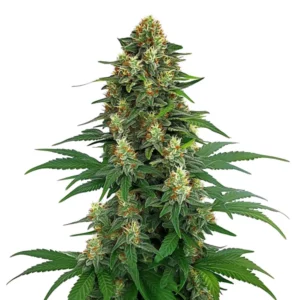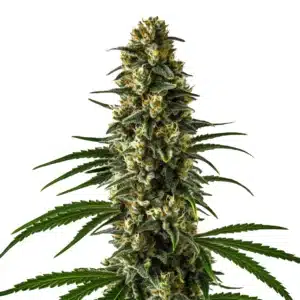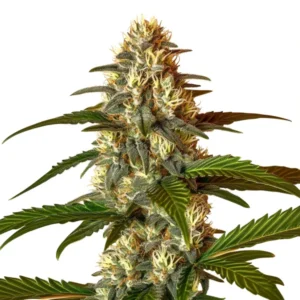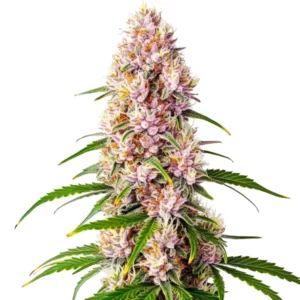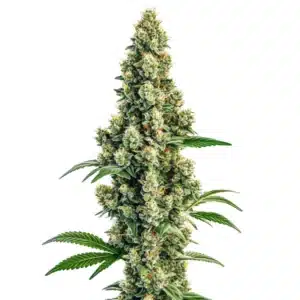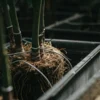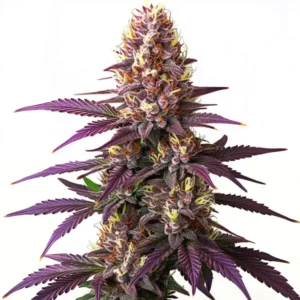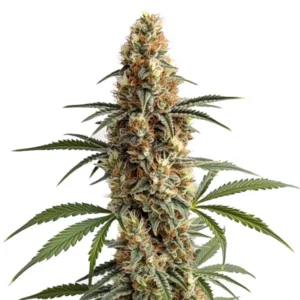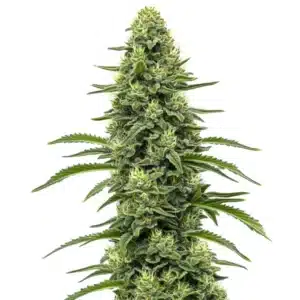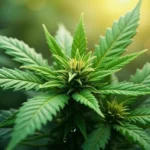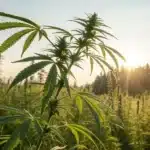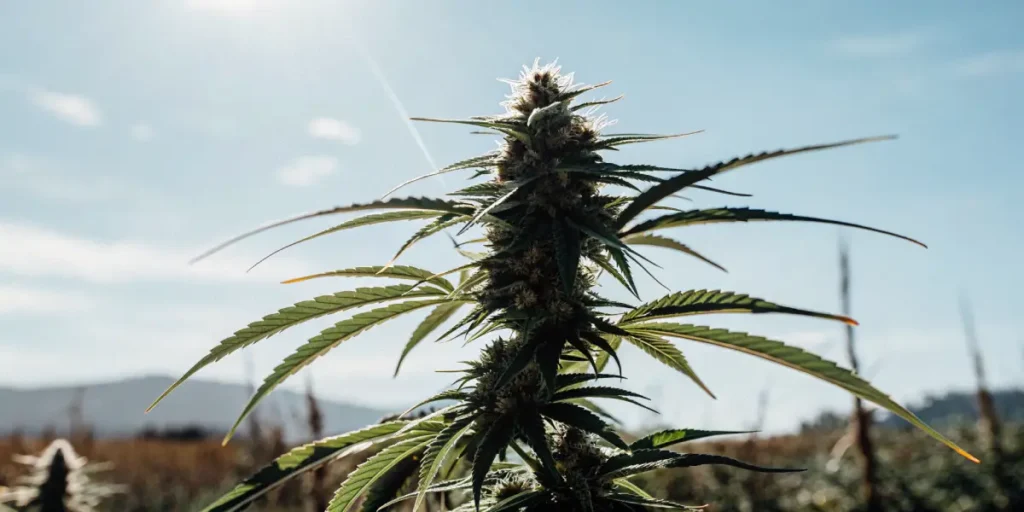
Cannabis Plant Structure Explained
The cannabis plant is a fascinating organism, highly valued for its unique properties. Knowing its structure can help growers optimize their plants’ potential. Each part plays a crucial role in the plant’s growth and eventual yield. From the roots to the flowers, each component has a function that supports the entire plant.
When talking about cannabis plant structure explained, it’s essential to start from the ground up. The root system anchors the plant and absorbs nutrients from the soil. Healthy roots mean a healthy plant, so giving them the right environment is key. Use well-drained soil and ensure adequate watering to avoid root rot.
Recommended Strains
Tangie
|
|
THC | 19% - 22% (Medium) |
|
|
Type | Feminized |
|
|
Yield | High |
|
|
Phenotype | 30% Indica / 70% Sativa |
Girl Scout Cookies
|
|
THC | 18% - 25% (Medium) |
|
|
Type | Feminized |
|
|
Yield | High |
|
|
Phenotype | 60% Indica / 40% Sativa |
Moving upwards, the stem provides support and acts as the plant’s main highway for transporting nutrients and water. A thick, sturdy stem indicates a healthy plant. Techniques like topping can encourage a thicker stem, leading to better support for the budding flowers later in the growth stages.
Leaves: The Plant’s Energy Factory
Leaves are the energy factories of the cannabis plant. They capture sunlight and use it to create energy through photosynthesis. This energy is vital for the plant’s growth and development. In a cannabis plant anatomy detailed guide, leaves are often described as fans and sugar leaves.
Fan leaves are large and broad, capturing the maximum amount of sunlight. Removing some of these leaves can improve airflow, especially in dense growth stages. However, be cautious not to remove too many, as they are essential for energy production. Sugar leaves, on the other hand, are smaller and grow among the flowers. They are covered in trichomes, making them valuable when harvesting for hash or other concentrates.
Knowing cannabis plant parts diagram can be crucial in identifying the role of leaves in the overall plant structure. Leaves also play a significant role in temperature regulation, as they release water vapor through a process called transpiration. This helps keep the plant cool and facilitates nutrient uptake from the roots.
In a comprehensive breakdown of cannabis plant structure, the health of the leaves can often indicate the plant’s overall condition. Yellowing or curled leaves may suggest nutrient deficiencies or environmental stress, and addressing these issues promptly can prevent further damage to the plant.
Promos & Deals
Nodes and Internodes: Growth and Development
Nodes are where leaves and branches grow from the stem. The distance between nodes, known as internodes, can give clues about the plant’s health and growth. In an in-depth explanation of cannabis plant morphology, shorter internodes often indicate a bushier plant, which is beneficial for indoor growing.
Managing the space between nodes can be crucial. Techniques like low-stress training (LST) help control node spacing, encouraging more bud sites and a more manageable plant size. This technique is particularly useful for strains like Tangie from Blimburn Seeds, which can grow quite tall without training.
Nodes are also critical in determining the plant’s sex during the early flowering stages. Male plants typically develop pollen sacs at the nodes, while female plants produce pistils. Recognizing these early signs is vital for growers looking to prevent unwanted pollination and ensure a high-quality harvest.
Internodal spacing can also be influenced by environmental factors such as light intensity and temperature. In a cannabis plant growth stages and structure analysis, optimizing these conditions can lead to a more robust and productive plant, ensuring maximum yield and quality.
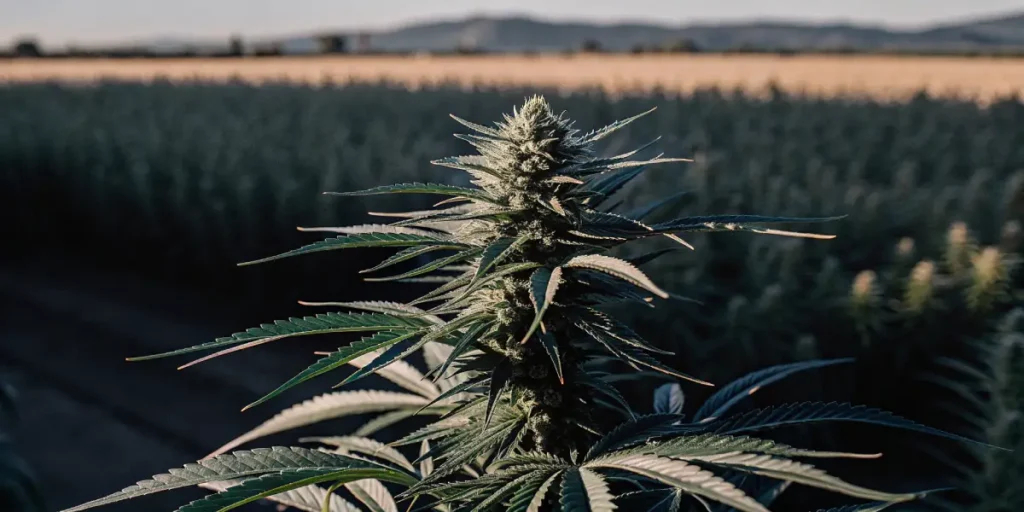
The Reproductive Parts: Flowers and Buds
The most sought-after part of the cannabis plant is the flowers or buds. These are packed with cannabinoids and terpenes, which are responsible for the plant’s effects and flavors. A comprehensive breakdown of cannabis plant structure focuses heavily on these parts.
Buds form at nodes and grow in clusters called colas. The main cola forms at the top of the plant, but smaller colas can develop along the branches. Strains like Girl Scout Cookies, available at Blimburn Seeds, tend to produce dense, resinous buds that are highly prized.
Flowers are the pinnacle of the cannabis plant’s lifecycle, representing the culmination of the plant’s growth and development. During the flowering stage, the plant redirects its energy from vegetative growth to bud production, making this phase critical for achieving high yields.
Understanding the intricacies of cannabis plant anatomy detailed guide can help growers optimize flowering conditions. By adjusting light cycles, nutrient levels, and environmental factors, growers can enhance bud development, ensuring the production of potent and aromatic flowers.
Trichomes: The Resin Factories
Trichomes are tiny, hair-like structures covering the buds and sugar leaves. They produce and store the plant’s cannabinoids and terpenes. These compounds give each strain its unique effect profile. When discussing cannabis plant growth stages and structure analysis, trichomes are a key focus.
As the plant matures, trichomes change color, indicating the best time for harvest. Clear trichomes suggest more time is needed, while cloudy or amber trichomes indicate peak potency. Observing trichomes is a practical way to decide when to harvest strains like Blue Dream from Blimburn Seeds for optimal results.
Trichomes also serve as the plant’s natural defense mechanism, deterring pests and protecting against harmful UV rays. In an in-depth explanation of cannabis plant morphology, the density and distribution of trichomes can vary significantly between strains, influencing the plant’s resistance to environmental stressors.
For cultivators, monitoring trichome development is essential not only for timing the harvest but also for ensuring the desired potency and flavor profile. By closely observing trichome changes, growers can tailor their cultivation practices to produce premium quality cannabis.
Roots: The Foundation of Growth
Roots are often overlooked, but they are vital to the cannabis plant’s success. They absorb water and nutrients and anchor the plant in the soil. A thriving root system leads to a thriving plant. Adequate oxygenation and nutrient availability are crucial for root health.
Soilless media like coco coir can improve root aeration, promoting faster growth. Hydroponic systems offer another route, providing roots with direct access to nutrient-rich water. Whichever method you choose, maintaining healthy roots is a cornerstone of successful cultivation.
In a comprehensive breakdown of cannabis plant structure, the root system is recognized as the plant’s lifeline, directly impacting its overall health and productivity. By providing a stable and nutrient-rich environment, growers can support robust root development and enhance plant resilience.
Understanding cannabis plant parts diagram can aid growers in identifying potential root issues early on. Symptoms such as wilting or discoloration in the foliage can often be traced back to root problems, and addressing these issues promptly can prevent severe impacts on the plant’s yield and quality.
- Roots: Anchor and absorb nutrients.
- Stem: Supports and transports nutrients.
- Leaves: Photosynthesis for energy.
- Nodes: Growth points for leaves and flowers.
- Trichomes: Produce and store cannabinoids.
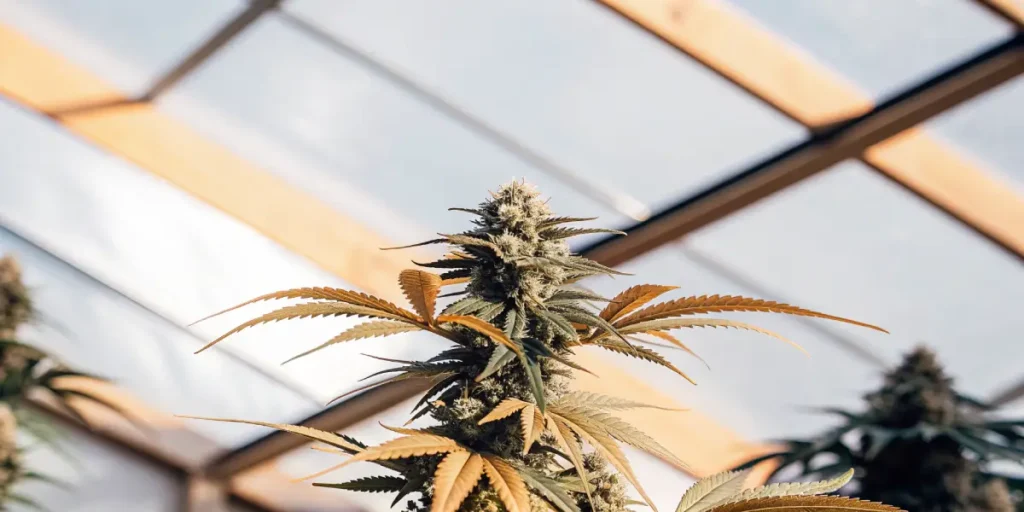
FAQs
What is the basic structure of a cannabis plant?
A cannabis plant consists of several key parts: roots, stem, leaves, nodes, flowers, and trichomes. Each part plays a vital role in the plant’s growth and development. Roots anchor the plant and absorb nutrients, while the stem supports and transports essential elements.
Leaves, both fan and sugar types, are crucial for photosynthesis. Nodes are the points where new leaves and flowers emerge. Flowers contain the sought-after cannabinoids and terpenes. Trichomes, tiny hair-like structures, produce these valuable compounds, making them integral to the plant’s potency.
In a cannabis plant anatomy detailed guide, the interconnectedness of these parts is emphasized, highlighting how each contributes to the plant’s success. By understanding the cannabis plant structure explained, growers can make informed decisions to optimize their cultivation practices.
For novices and seasoned growers alike, a comprehensive breakdown of cannabis plant structure serves as a valuable resource, offering insights into how each component functions and how to manage them for optimal growth and yields.
How do I identify male and female cannabis plants?
Identifying the sex of your cannabis plants is crucial for successful cultivation. Male plants produce pollen sacs, which appear as small, round balls at the nodes. In contrast, female plants develop pistils, which look like tiny white hairs. These differences are often visible a few weeks into the vegetative stage.
For growers aiming for buds, removing male plants is essential to prevent pollination. This ensures female plants focus energy on producing resinous flowers instead of seeds. Strains such as Blue Dream from Blimburn Seeds are often preferred for their potent, seedless buds.
In an in-depth explanation of cannabis plant morphology, the timing of sex identification is crucial, as early detection can prevent unwanted cross-pollination and seed production. This allows female plants to focus all their energy on producing high-quality buds.
Utilizing an understanding cannabis plant parts diagram can further aid in recognizing subtle differences between male and female plants, ensuring a successful and productive cultivation process.
Why are trichomes important in cannabis plants?
Trichomes are critical because they house cannabinoids and terpenes, the compounds responsible for cannabis’ effects and flavors. These tiny structures cover the buds and sugar leaves, acting as the plant’s natural defense mechanism against pests and environmental stress.
For growers, monitoring trichome development is essential for timing the harvest. Trichomes change color as they mature, providing visual cues on potency levels. Harvesting when trichomes are cloudy or amber yields optimal effects, making this a crucial aspect of a cannabis plant structure explained.
In the context of cannabis plant growth stages and structure analysis, trichomes are not only important for their chemical content but also for their role in protecting the plant during its most vulnerable stages. By producing a sticky resin, trichomes deter herbivores and shield the plant from harsh environmental conditions.
Trichomes also contribute to the plant’s aesthetic appeal, with their glossy, crystal-like appearance enhancing the visual quality of the buds. This makes them a key focus for growers aiming to produce visually striking and potent cannabis products.
How does the node spacing affect cannabis plant growth?
Node spacing, the distance between growth points on the stem, influences the plant’s overall shape and yield. Shorter spacing often results in bushier plants, which can be advantageous for indoor growing, as it allows for more bud sites in a compact space.
Techniques like low-stress training (LST) can manipulate node spacing, encouraging horizontal growth. This method is beneficial for strains that tend to grow tall, such as Tangie from Blimburn Seeds. Adjusting node spacing helps maximize light exposure and improve yields.
In a cannabis plant anatomy detailed guide, the importance of node spacing is highlighted as a key factor in determining plant structure and productivity. By carefully managing node spacing, growers can optimize light penetration and airflow, reducing the risk of mold and mildew.
The interrelationship between node spacing and plant morphology is a central theme in an in-depth explanation of cannabis plant morphology, providing valuable insights for growers looking to enhance their cultivation techniques and achieve superior results.
What are the growth stages of the cannabis plant?
The cannabis plant goes through several growth stages: germination, seedling, vegetative, and flowering. During germination, the seed sprouts roots and a small stem. The seedling stage follows, where the plant develops its first set of leaves, crucial for photosynthesis.
The vegetative stage is marked by rapid growth, with the plant focusing on building strong roots and foliage. Finally, in the flowering stage, the plant develops buds rich in cannabinoids. Each stage requires specific care to ensure a healthy, productive plant.
In a comprehensive breakdown of cannabis plant structure, each growth stage is meticulously analyzed to provide growers with a roadmap for successful cultivation. By understanding the specific needs of the plant at each stage, growers can tailor their practices to support optimal development and yield.
From a cannabis plant growth stages and structure analysis perspective, recognizing the transitions between these stages enables growers to anticipate the plant’s needs and make timely adjustments to their care regimen, ensuring a bountiful and high-quality harvest.


